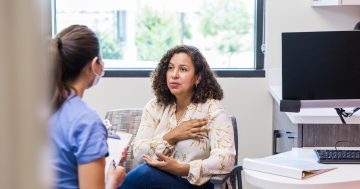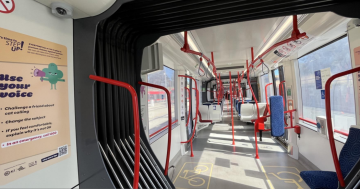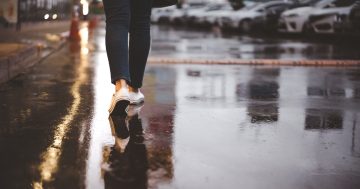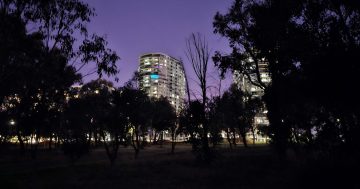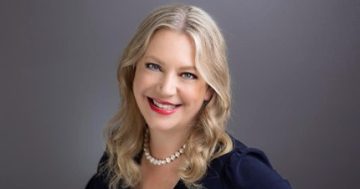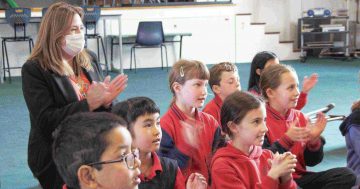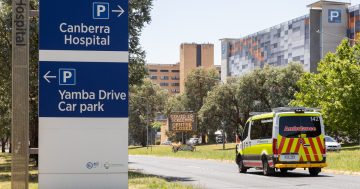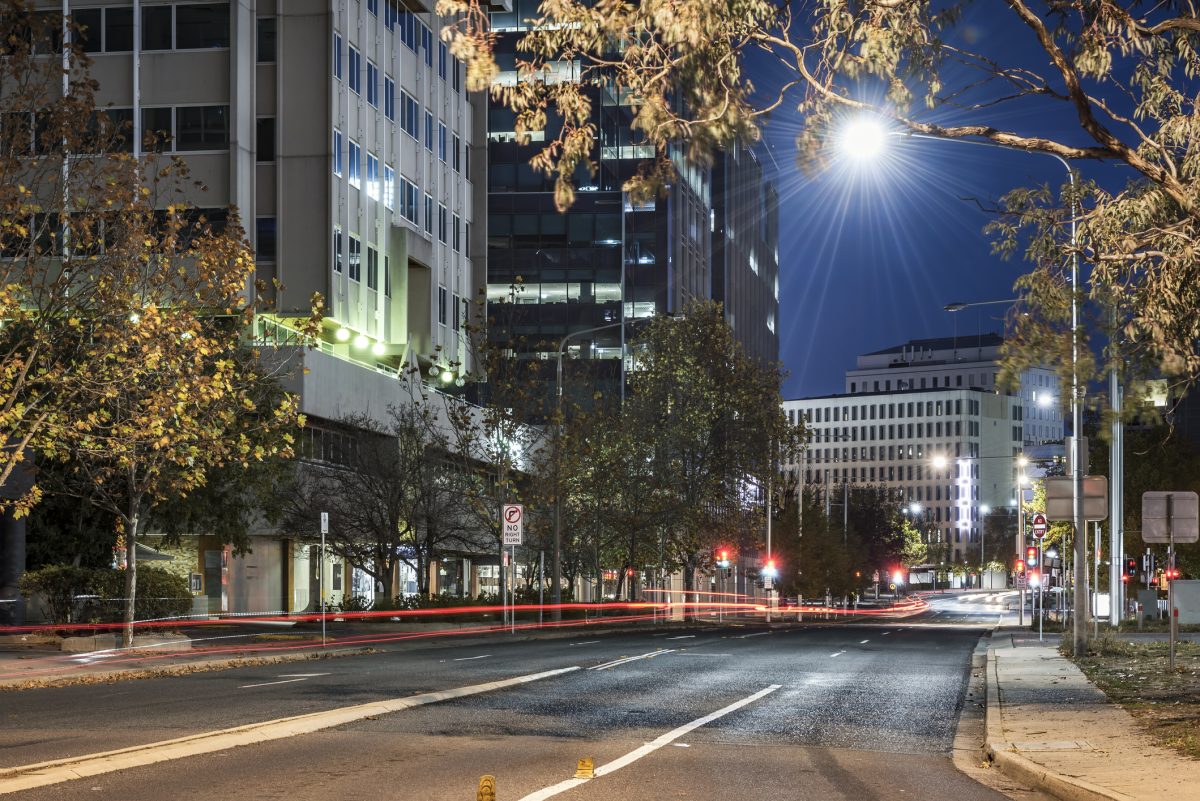
The majority of women in the ACT surveyed said they didn’t walk or take public transport alone after dark. Photo: File.
Women in the ACT feel safer at night than they did 10 years ago, according to the latest Australian Bureau of Statistics data. It also suggests women in the territory feel safer walking in their local area after dark than in any other jurisdiction.
However, Women’s Health Matters (WHM) CEO Lauren Anthes said the data didn’t necessarily reflect the reality, given the sample size was small and there is still stigma and apprehension around reporting.
The latest release from the 2021-22 Personal Safety Survey collected information from people over 18 about how safe they felt at home, walking around their local area and taking public transport alone at night.
The ABS also provided more detailed state and territory data on women’s safety.
According to the research, 38.6 per cent of women in the ACT walked alone in their local area after dark and felt safe. This was the highest proportion of respondents in any Australian jurisdiction, above NSW at 37.4 per cent and Tasmania at 34.4 per cent.
Only a small proportion of women in the ACT reported feeling unsafe at night: 5.2 per cent said they felt unsafe waiting for public transport alone after dark over the last 12 months, down from 9.3 per cent 10 years earlier.
About 5.6 per cent felt unsafe walking alone in the local area after dark, down from 7.8 per cent in 2012 and 9.6 per cent in 2005.
The proportion of women in the Territory choosing not to walk alone at night because they felt unsafe had also fallen from 30.7 per cent in 2005 and 26.5 per cent in 2012 to 23.1 per cent in 2021-22.
Nevertheless, the majority of women surveyed said they did not walk alone at night or take public transport by themselves after dark.
“From our perspective as an organisation we certainly find women consistently say they don’t feel safe walking alone at night and in public spaces in the ACT,” Ms Anthes said.
“The dataset is relatively small in terms of the cohort of people.”
Ms Anthes also pointed out that the survey didn’t break down into individual demographics. For example, she said ABS data had shown heterosexual women were far less likely to experience violence than women who identified as gay, lesbian, bisexual or who used a different term.
WHM operates the Canberra Safety Map, an online resource where Canberrans can share information on places where they feel safe or unsafe, and why.
Ms Anthes said this map clearly showed personal safety in the ACT also varied by area.
While there’s still more that needs to be done, Ms Anthes said there have been some improvements to Canberra’s night-time safety in recent years, in part thanks to information collected by the Canberra Safety Map.
“Haig Park is a perfect example of that,” she said. “People were reporting experiences of feeling unsafe, like poor lighting, hiding spots, and inadequate access to help.
“The ACT Government did quite a lot of work with the data in terms of reviewing and renewing that space, improving lighting, open space and visibility.
“After that, people reported they felt a lot safer.”
She also said similar work was being done in Woden town centre.

Step Up! posters have been added to light rail carriages as part of WHM’s campaign to improve women’s safety in Canberra. Photo: Supplied.
Ms Anthes said attitudes also needed to change so people understood women’s safety was everyone’s responsibility.
“It’s important to note from a city renewal and development perspective that the ACT Government is engaging with the safety map and how it can improve public spaces, but we can’t have that detract from the continuing experiences of women and other people in public spaces.”
She said more needed to be done to encourage people to report how they felt about public spaces and what needed to be changed, by engaging with the safety map and other local organisations.
“Without that live information, we can’t do that advocacy.”
WHM is working to change this through its ‘Step Up!’ campaign in partnership with the City Renewal Authority, which urges Canberrans to help prevent harassment of women in public spaces by becoming active bystanders.
“Attitudes also need to shift towards how people engage with women,” Ms Anthes said, adding the government needed to invest more in primary prevention of violence.
“The most important thing is we know women’s safety is still an issue. We hear about it all the time, we see it on the map, we know we need to continue talking about it.”












